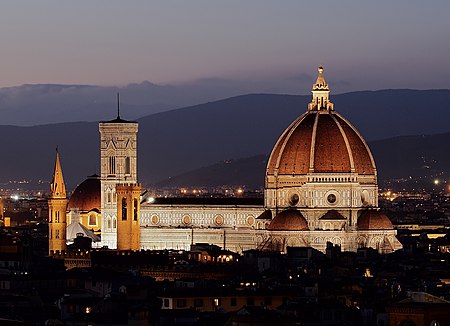Roman Catholic Archdiocese of Florence

The Archdiocese of Florence (Latin: Archidioecesis Florentina) is a metropolitan see of the Catholic Church in Italy. It was traditionally founded in the 1st century, according to the 14th century chronicler Giovanni Villani. The diocese was directly subordinate to the Holy See (Papacy) until 1420.Florence was elevated to the dignity of an archdiocese on May 10, 1419, by Pope Martin V. The ecclesiastical province of Florence, of which the Archbishop of Florence in the metropolitan, includes the suffragan dioceses of Arezzo-Cortona-Sansepolcro, Fiesole, Pistoia, Prato, and San Miniato. The seat of the Archbishop of Florence is Florence Cathedral, otherwise the Basilica di Santa Maria del Fiore. Since September 2008 Cardinal Giuseppe Betori has been the Archbishop.
Excerpt from the Wikipedia article Roman Catholic Archdiocese of Florence (License: CC BY-SA 3.0, Authors, Images).Roman Catholic Archdiocese of Florence
Viale Filippo Strozzi, Florence Quartiere 1
Geographical coordinates (GPS) Address Nearby Places Show on map
Geographical coordinates (GPS)
| Latitude | Longitude |
|---|---|
| N 43.7833 ° | E 11.25 ° |
Address
Fortezza da Basso (Fortezza di San Giovanni Battista)
Viale Filippo Strozzi
50100 Florence, Quartiere 1
Tuscany, Italy
Open on Google Maps








